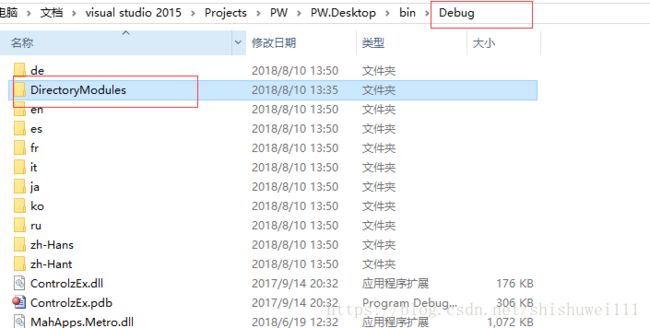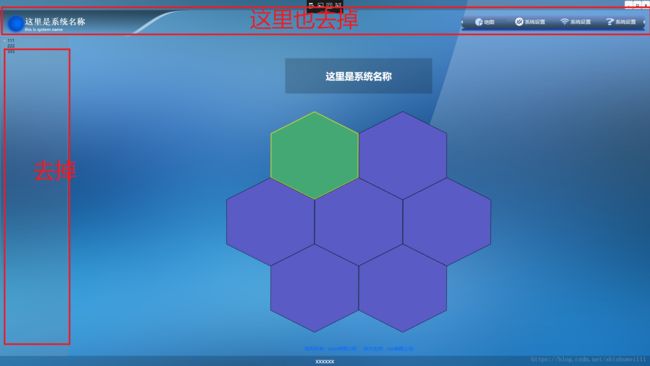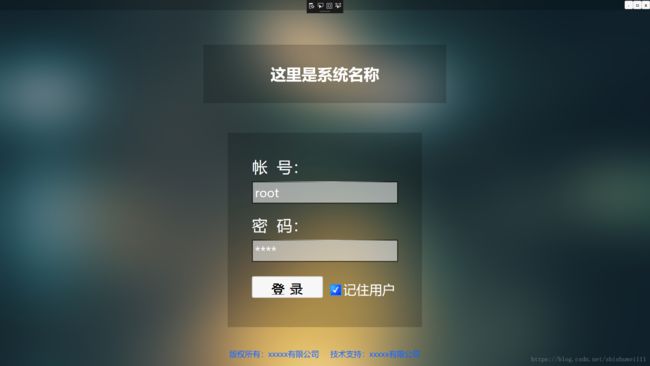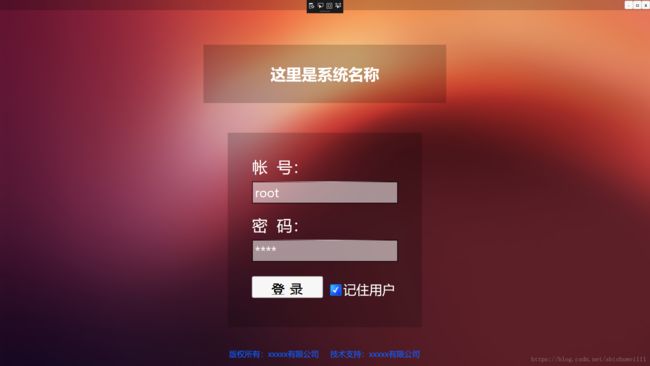Prism for WPF 搭建一个简单的模块化开发框架(一)
最近闲来无事又想搞搞WPF。。。。。
做个框架吧,可能又是半途而废。。。。总是坚持不下来
不废话了,
先看一下工程结构
布局大概是这样的
| SystemHeader | |
| Aside | Main |
| Footer | |
PW.SystemHeader是用来放导航条,Log或者系统名称的
PW.Aside是准备放每个模块的树形菜单的,可以根据后续系统的需要做相应的变动和扩展
PW.Login就是一个登陆的模块了
PW.Footer只是一个底部的占位栏,需要的话可以放置一些显示信息
Main初始化时存放了Login的region 此时SystemHeader、Aside、Footer还未加载,所以主界面就算一个登陆页面
在登陆之后LoadModule,对应的区域也就加载上对用的模块了
主窗体布局代码是这样的
那么到底是怎么实现模块化松耦合呢,先贴一下代码
Bootstrapper.cs
// Copyright (c) Microsoft Corporation. All rights reserved. See License.txt in the project root for license information.
namespace PW.Desktop
{
using System.ComponentModel.Composition;
using System.ComponentModel.Composition.Hosting;
using System.Windows;
using Prism.Logging;
using Prism.Modularity;
using Prism.Mef;
///
/// Initializes Prism to start this quickstart Prism application to use Managed Extensibility Framework (MEF).
///
public class Bootstrapper : MefBootstrapper
{
private readonly CallbackLogger callbackLogger = new CallbackLogger();
///
/// Creates the shell or main window of the application.
///
/// The shell of the application.
///
/// If the returned instance is a
protected override DependencyObject CreateShell()
{
return this.Container.GetExportedValue();
}
///
/// Initializes the shell.
///
///
/// The base implemention ensures the shell is composed in the container.
///
protected override void InitializeShell()
{
base.InitializeShell();
Application.Current.MainWindow = (Shell) this.Shell;
Application.Current.MainWindow.Show();
}
///
/// Configures the
///
/// The base implementation does nothing.
///
protected override void ConfigureAggregateCatalog()
{
base.ConfigureAggregateCatalog();
// Add this assembly to export ModuleTracker
this.AggregateCatalog.Catalogs.Add(new AssemblyCatalog(typeof(Bootstrapper).Assembly));
// Module A is referenced in in the project and directly in code.
this.AggregateCatalog.Catalogs.Add(new AssemblyCatalog(typeof(PW.LogIn.LoginModule).Assembly));
// Module B and Module D are copied to a directory as part of a post-build step.
// These modules are not referenced in the project and are discovered by inspecting a directory.
// Both projects have a post-build step to copy themselves into that directory.
DirectoryCatalog catalog = new DirectoryCatalog("DirectoryModules");
this.AggregateCatalog.Catalogs.Add(catalog);
}
///
/// Configures the
///
/// The base implementation registers all the types direct instantiated by the bootstrapper with the container.
/// The base implementation also sets the ServiceLocator provider singleton.
///
protected override void ConfigureContainer()
{
base.ConfigureContainer();
// Because we created the CallbackLogger and it needs to be used immediately, we compose it to satisfy any imports it has.
this.Container.ComposeExportedValue(this.callbackLogger);
}
///
/// Creates the
///
/// The base implementation returns a new ModuleCatalog.
///
///
/// A ConfigurationModuleCatalog.
///
protected override IModuleCatalog CreateModuleCatalog()
{
// When using MEF, the existing Prism ModuleCatalog is still the place to configure modules via configuration files.
return new ConfigurationModuleCatalog();
}
///
/// Create the
///
/// The base implementation returns a new TextLogger.
///
///
/// A CallbackLogger.
///
protected override ILoggerFacade CreateLogger()
{
// Because the Shell is displayed after most of the interesting boostrapper work has been performed,
// this quickstart uses a special logger class to hold on to early log entries and display them
// after the UI is visible.
return this.callbackLogger;
}
}
}
这里可以看到,基本上就算copy了Prism的demo代码,只是略微改动了一下ConfigureAggregateCatalog方法
手动加载了LogIn模块,这里工程里需要引入Login模块,然后剩余的所有布局模块以及系统模块都是在DirectoryModules下面
程序生成目录下面是这样的
这样的好处就算,各模块互不相干,以后可以像插件一样做一个新的模块放到DirectoryModules就能运行
然后每个模块下面只要做一个module的接口实现类类似AsideModule.cs这样
using Prism.Modularity;
using Prism.Mef.Modularity;
using Prism.Regions;
using System.ComponentModel.Composition;
using System;
using PW.Infrastructure;
namespace PW.Aside
{
[ModuleExport(typeof(AsideModule), InitializationMode = InitializationMode.OnDemand)]
public class AsideModule : IModule
{
private readonly IModuleTracker moduleTracker;
private readonly IRegionManager regionManager;
///
/// Initializes a new instance of the
/// The module tracker.
[ImportingConstructor]
public AsideModule(IModuleTracker moduleTracker, IRegionManager regionManager)
{
if (moduleTracker == null)
{
throw new ArgumentNullException("moduleTracker");
}
this.moduleTracker = moduleTracker;
this.moduleTracker.RecordModuleConstructed(ModuleNames.Aside);
this.regionManager = regionManager;
}
///
/// Notifies the module that it has be initialized.
///
public void Initialize()
{
this.moduleTracker.RecordModuleInitialized(ModuleNames.Aside);
regionManager.RegisterViewWithRegion(RegionNames.Aside, typeof(MenuView));
}
}
}
每个模块的基本上都一样,只是在Initialize中去为当前Region注册不同的view
好像也没什么好写的了,差不多就这样吧
说一下我遇到的坑和怎么解决的吧
就说布局中的MainRegion,因为初始化拿它加载了login模块,但是在登陆成功后想去加载Map或者SystemSet时,本来想的是用RegionManager更改mainContentControl的Region名称,但是死活不行,各种报错,有一种方法是能做到去加载不同的Region的,就是用ItemsControl,但是用ItemsControl效果很不好,不是全屏显示在MainRegion里
然后查资料,问csdn,都没有结构,可能是现在用wpf的本来就少吧,
最后没事儿时偶然就想到了,在不同的模块能有自己独立的Region做导航,MainRegion只是导航到各模块的主页面,就这样解决了
下面是做到现在的截图
这个本来是打算做一个登陆后的主导航的,上边和左边是要去掉的,还没处理,这时候布局其实已经出来了
再来几个换个风格的,其实就是换个背景图
写的比较乱,想用到项目里,就不上源码了,框架样式都还需要调整,对wpf不熟悉,也是写到哪查到哪,各种不会
现在准备给各模块做公用样式呢,又不知道怎么弄好了,,,,我多想有一个wpf的前辈给指教指教啊。。。。看到的朋友知道怎么弄可以给说一下啊,有好的方法,好的建议都能写下来啊,,,,感觉自己实在是有点瞎弄啊








